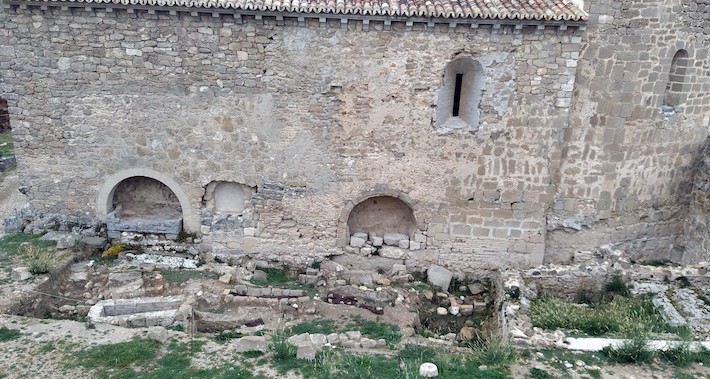 GUADALAJARA, SPAIN—According to a statement released by the University of Rovira i Virgili (URV), the remains of 25 people who were buried between the twelfth and fifteenth centuries in central Spain’s castle at Zorita de los Canes have been examined by researchers from URV, the Max Planck Institute, and the University of Barcelona. In the late twelfth century, Alfonso VIII of Castile ceded the castle to a Cistercian military and religious order known as the Order of Calatrava. Carme Rissech of URV and her colleagues determined that 23 of the individuals buried in the castle’s cemetery likely died from unhealed injuries. “We observed many lesions on the upper part of the skull, the cheeks, and the inner part of the pelvis, which is consistent with the hypothesis that we are dealing with warriors,” Rissech said. Analysis of carbon and nitrogen isotopes in the bones also showed that the possible knights had consumed a diet rich in animal protein and marine fish. The sizes of the bones of one individual suggests that a woman had been buried among the warriors, and indeed, marks of training with a sword were detected on her bones. “She may have died in a manner very similar to that of male knights, and it is likely that she was wearing some kind of armor or chain mail,” Rissech explained. She noted, however, that the woman consumed less protein than the other warriors, and therefore may have held a lower social status. Read the original scholarly article about this research in Scientific Reports. To read about a burial of a powerful Bronze Age woman uncovered in southeast Spain, go to "Crowning Glory."
GUADALAJARA, SPAIN—According to a statement released by the University of Rovira i Virgili (URV), the remains of 25 people who were buried between the twelfth and fifteenth centuries in central Spain’s castle at Zorita de los Canes have been examined by researchers from URV, the Max Planck Institute, and the University of Barcelona. In the late twelfth century, Alfonso VIII of Castile ceded the castle to a Cistercian military and religious order known as the Order of Calatrava. Carme Rissech of URV and her colleagues determined that 23 of the individuals buried in the castle’s cemetery likely died from unhealed injuries. “We observed many lesions on the upper part of the skull, the cheeks, and the inner part of the pelvis, which is consistent with the hypothesis that we are dealing with warriors,” Rissech said. Analysis of carbon and nitrogen isotopes in the bones also showed that the possible knights had consumed a diet rich in animal protein and marine fish. The sizes of the bones of one individual suggests that a woman had been buried among the warriors, and indeed, marks of training with a sword were detected on her bones. “She may have died in a manner very similar to that of male knights, and it is likely that she was wearing some kind of armor or chain mail,” Rissech explained. She noted, however, that the woman consumed less protein than the other warriors, and therefore may have held a lower social status. Read the original scholarly article about this research in Scientific Reports. To read about a burial of a powerful Bronze Age woman uncovered in southeast Spain, go to "Crowning Glory."
Remains of Medieval Warrior Monks Examined in Spain
